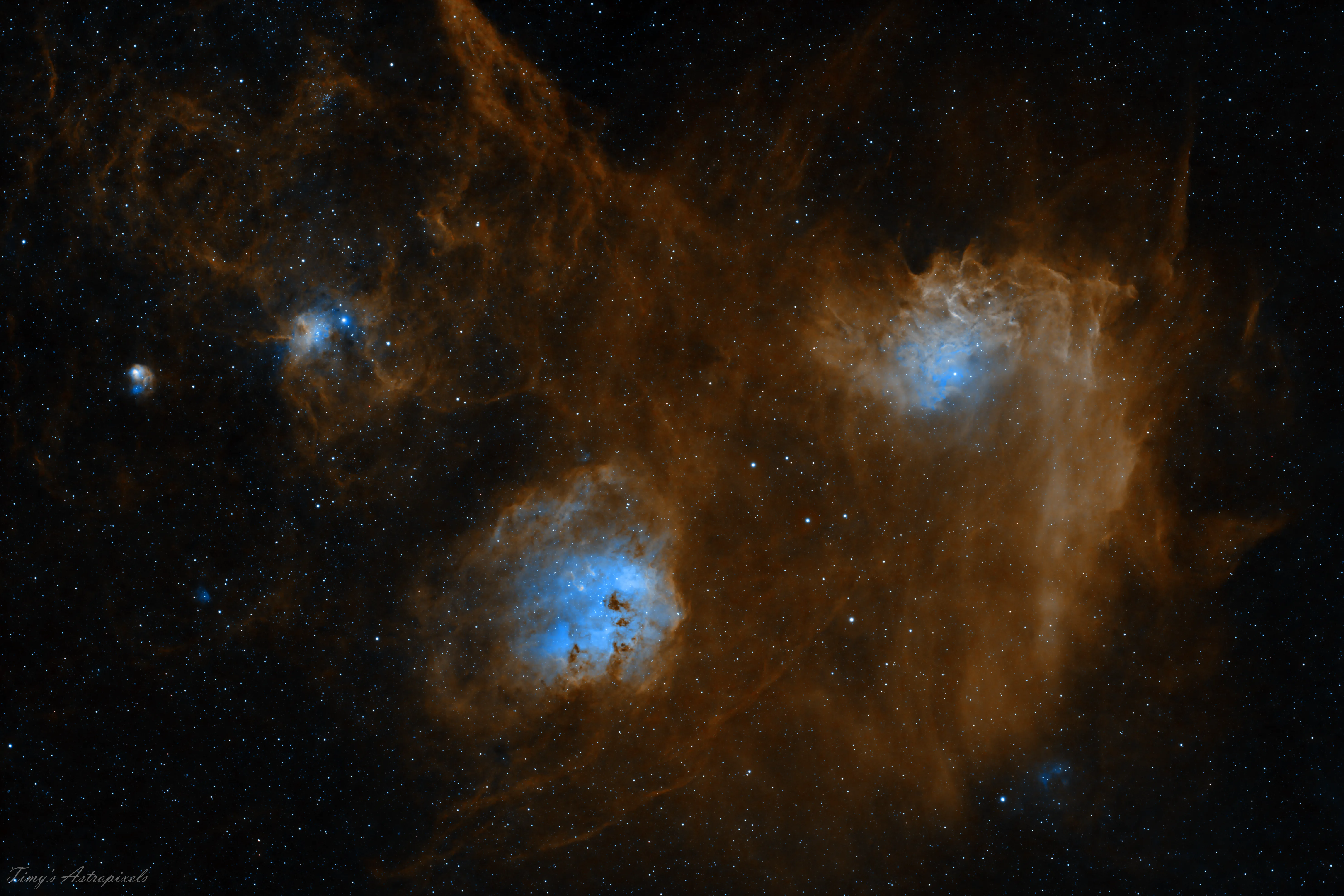Flamingstar and Tadpoles Nebulae
1. Jan. 2025


Gear used
- Telescope: Redcat 51u
- Filter: Optolong L-enhance
- Camera: ZWO ASI2600MC pro
- Guidescope: Uniguide 32
- Guidecamera: ZWO ASI220MM Mini
- Mount: Skywatcher Star Adventurer GTI
- Controls: ASIAIR Plus
Data collected
- Sky: Bortle 4 to 5
- Lights: 456 x 120s
- Biases: 30
- Darks: 30
- Flats: 30
New Year under the Stars
This is the image with the longest integration time I have taken so far in my astrophotography journey.
I captured it over three separate nights, which is quite special because having three clear nights during a single new moon period is rare at my location.
And even though this opportunity arose exactly at New Year’s, when social gatherings are a priority for many, I just couldn’t pass up the chance to collect good data.
So, I packed my gear and took it with me to the family gathering. I set up my rig in the garden, and instead of staying awake just to celebrate at midnight, I stayed up all night to capture the valuable data I sill needed for this image.
For this image, I was able to capture just over 15 hours of data, which allowed me to bring out the faint Ha signal in the region between the Flaming Star and the Tadpoles.
This was made possible thanks to the image processing technique I use when working with multi-narrowband data from my OSC camera.
In Siril, there is an option to extract the Ha and OIII signals directly during the stacking process.
This allows me to process the much stronger Ha signal separately from the OIII, which is generally an advantage because I can push the Ha signal further without introducing too much noise from the OIII while stretching.
As an added bonus, this method makes it easy to choose any color palette and adjust the saturation levels for each signal individually when recombining the data after stretching.